(156973 products available)
















































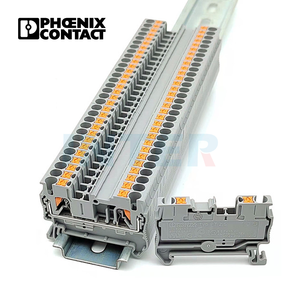



































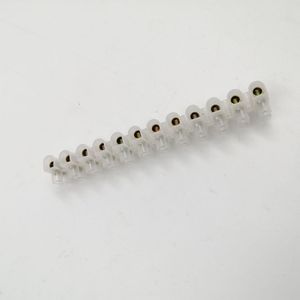









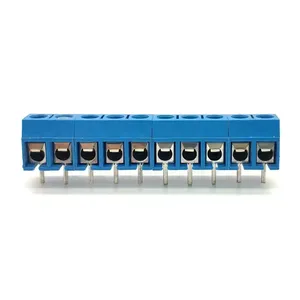
















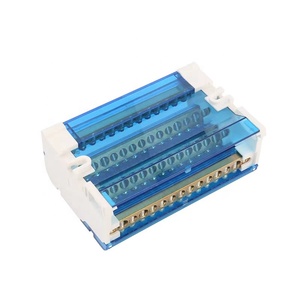
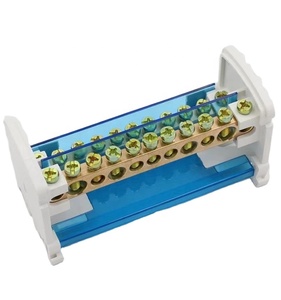






























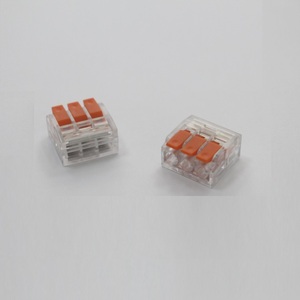

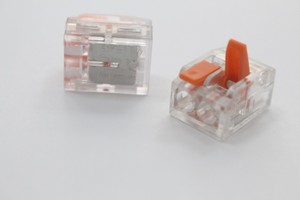
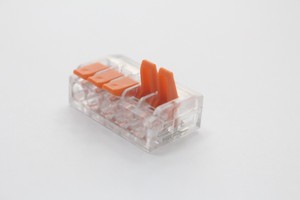
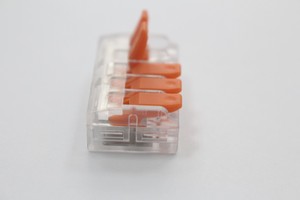
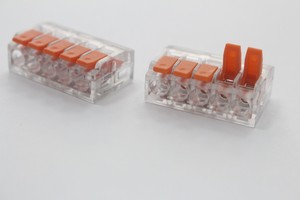










































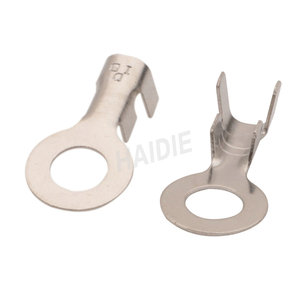



















For buyers to purchase various terminal blocks in bulk, they must understand the various kinds available. Each kind is designed for unique electrical systems and has specific applications depending on parameters such as arrangement, mounting style, and even function.
Wall-mounted terminal blocks
The prime characteristic of these terminal blocks is that they are mounted on walls or open panels and hence can be easily accessed. Common applications for these terminal blocks are heavy-duty machinery, outdoor enclosures, and industrial control systems. The reason these blocks are used in such areas is that they provide easy access to wired components and a more spacious wiring area than other types.
Feeder terminal block
These blocks are used for high-voltage or high-current wiring in industrial or commercial electrical systems. They are larger and more robust than other terminal blocks, which can handle much higher electrical loads. Grouping or separating power or control circuits makes it easy to distribute power safely throughout a control panel or electrical system.
Barrier terminal block
Unlike other terminal blocks that have open designs, barrier blocks have a channel or barrier that separates wiring sections for increased safety. This feature reduces the risk of accidental short circuits and improves organization. Manufacturing plants, power distribution systems, and any high-circuit density environment commonly use these blocks.
Circular terminal blocks
In circular terminal blocks, connections are arranged in a circular pattern, allowing multiple entry points for wiring. This feature makes it easier to fit into compact spaces. These terminal blocks are often used in robotics, aerospace, and telecommunications due to their durable design and ability to accommodate multiple signal pathways.
Din rail terminal blocks
Din rail terminal blocks are mounted on a Din rail for easy installation in electrical cabinets or enclosures. These blocks have a locking mechanism that enables them to be secured onto the Din rail with no extra hardware required for the installation. These terminal blocks are widely used in control panels and industrial automation systems due to simple installation and modularity.
Insulated terminal blocks
Insulated terminal blocks have a non-conductive housing that protects the user from electric shock and prevents accidental short circuits between terminals. Power plants, HVAC systems, and any area with high electrical voltages frequently employ these blocks. These blocks help to improve system safety in addition to reducing contact with exposed wiring.
Solid terminal blocks
The difference between solid and spring-loaded terminal blocks is that solid blocks use screws or bolts to secure wire connections. The reliability of solid terminal blocks make them ideal for low-vibration environments where stable connections are required. These blocks are preferred in areas with heavy electrical loads and thick wiring to ensure stability and easy maintenance.
Buyers should think about the various features of a terminal block since these factors affect performance, dependability, and application compatibility. Different terminal block configurations or designs are needed in some situations.
Connection Types
There are two main connection types for terminal blocks. They are screw-fixed connections and spring-loaded connections. Screw connections provide a more secure and strong connection that can withstand larger electrical currents. A spring-loaded connection allows quicker wire installation and removal without tools, hence efficient in systems that require frequent adjustments or monitoring. The other connection type is hybrid terminal blocks, which take on the features of both.
Load Capacity
There is a large variance in load capacity depending on the terminal block design or model. The wire gauge or the size of the block itself and the operational voltage are key factors that influence the load capacity. The application’s electrical requirements determine how much load capacity a terminal block must have. A system that handles heavy electrical loads needs a high-capacity terminal block. Conversely, a low-power system only needs a terminal block that can handle low capacity.
Corrosion resistance
Wire terminals used in an electrical system must have superior corrosion resistance, especially for outdoor installations or areas prone to high moisture, humidity, or chemical exposure. Materials such as stainless steel, copper-nickel, and galvanized steel offer anti-corrosive properties.
Modularity
Terminal blocks like Din rail-mounted ones are highly modular and allow the easy addition or removal of block units. This modularity is especially important in control panel designs that require flexibility and system scalability. In industrial systems, where systems may be added or reconfigured frequently, terminal blocks that are modular are convenient.
Insulation properties
The housing or case of terminal blocks is usually made from thermoplastics, PVC, polyamide, or nylon. These materials are ideal for electrical insulation because they resist heat, chemicals, and wear. Durable insulating materials are critical in areas with extreme environments or over-exposed electrical components. For power plants and HVAC systems where high voltage is a problem, good insulating properties are crucial.
Buyers should identify the application areas of the terminal blocks they plan to purchase in bulk so that they ensure the product's performance. In each of the below-mentioned industry, there are unique requirements and operating conditions that necessitate using a distinct terminal block.
Control systems
Terminal blocks are widely used in industrial control systems to wire and connect electrical components like sensors, actuators, and controllers. Most of the time, these blocks are maneuverable, such as Din rail or spring-loaded terminal blocks, so the systems can be reconfigured easily. Their high load capacities also make them appropriate for handling the power demands of large industrial machinery.
Telecommunications
In telecommunication systems, terminal blocks provide stable and organized wiring for crucial equipment or devices like routers, switches, and communication lines. Circular terminal blocks are most often used in this space since they can handle multiple signal pathways while still being compact. Moreover, the durability and corrosion resistance of these blocks also make them ideal in this space, especially in outdoor or environmental condition installations.
The automotive industry
Terminal blocks perform a critical role in wiring harnesses and battery connections, making them an integral component in vehicle electrical systems. Here, insulated terminal blocks are preferred because of their superior protection features against short circuits and compact design. These blocks maintain their performance in this constant vibration and temperature changes.
HVAC systems
In an HVAC system, several electrical components are interconnected using terminal blocks, including motors, thermostats, and heating elements. Insulated terminal blocks are largely used in this space to ensure electrical safety and prevent short circuits. Besides, easy access and maintenance are important features that these blocks possess, as they need to be replaced or serviced often.
Power plants
Terminal blocks are widely used in power plants to wire and connect electrical equipment like generators, transformers, and circuit breakers. They need to have high electrical load capacity and superior insulation properties. The solid terminal block is the perfect fit for this harsh and demanding environment, as they are designed to maintain their integrity amid intense vibration and heat.
Here are a few factors buyers should consider when selecting an electrical terminal block:
Connection type
Wire screw terminal blocks have screw connections to secure wires using bolts, while terminal blocks with spring-loaded connections use a clamp mechanism to secure wires in place. The choice of connection depends on the client’s wiring needs and preferences. If the clients intend to frequently access or change the wiring, for example, go for terminal blocks with spring-loaded connections because they are easier to use than screw connections.
Electrical load
Different terminal blocks have different electrical load capacities, so select one that fits the electrical requirements of the systems in which clients will use them. An overstrained electrical system will mean that its terminal blocks easily overheat, sag, or even get damaged. Conversely, underutilized terminal blocks might have lower efficiency, so ensure the electrical load of terminal block systems matches their electrical requirements.
Insulation material
To pick insulated terminal blocks, first understand the different insulating materials. Nylon, thermoplastic, and polyamide are manufacturers' most commonly used materials. Each has pros, such as heat, wear, and chemical resistance. Also, never forget that good insulating material is important in high-risk electrical environments, as it protects users from electric shocks and prevents short-circuits.
Mounting style
Terminal blocks are mounted in various configurations, such as Din rails, wall-mounted, or PCB-mounted. Select one that meets the client’s space and access requirements. Din rail terminal blocks are easy to install in bulk within cabinets or enclosures, for instance. Conversely, wall-mounted terminal blocks are better for direct access.
Modularity
Modular terminal blocks have the advantage of easily adding or removing block units without complicated hardware requirements. This feature is especially convenient for expanding electrical systems. For dynamic control panels that clients might frequently change, they should go for modular terminal blocks. They will allow easy reconfiguration without having to start from scratch.
A1. A terminal strip helps to connect electrical wires to promote safety by isolating each wire from the others. This is done by providing a secure connection point between the wires. It helps organize all the wires in control systems to prevent messy and chaotic wiring.
A2. Yes, as long as manufacturers specify them, terminal blocks can be expected to last over a decade. Some factors that can affect this include the block’s material, load capacity, and the kind of environment to which clients expose them. To prolong their lifespan, avoid exposing terminal strips to adverse weather conditions, and ensure they do not overheat.
A3. Yes, insulated terminals are perfect for protecting client’s manual operations from electrical shocks. It protects them by covering any exposed conductive parts. Therefore, insulated terminal blocks are ideal for high-voltage environments.
A4. Even though terminal blocks do not require much maintenance, regular inspections will ensure a secure electrical connection. Therefore, check for overheating, sags, and corrosion. Din rail-mounted terminal blocks are especially easy to access during inspections because your clients can easily pull off the rail.